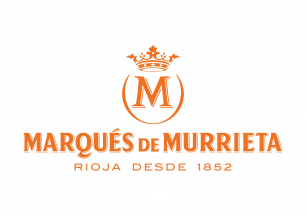Marqués de Murrieta & Pazo de Barrantes receive outstanding 2024 scores

We are delighted that Marqués de Murrieta in Rioja and Pazo de Barrantes in Rías Baixas, have received outstanding 2024 scores from James Suckling, Tim Atkin MW and The Wine Advocate.
A full list of scores and reviews can be found here:
Marqués de Murrieta – James Suckling 2024
Marqués de Murrieta – Tim Atkin MW 2024
Marqués de Murrieta – The Wine Advocate 2024
Highlights include:
Castillo Ygay Gran Reserva Especial 2012
100 Points, James Suckling
So much dried flower, mushroom, iron, rust, sweet berry, and grilled orange. Full-bodied with very elegant and refined tannins that melt in the mouth and give a real sense of place and integrity. Balanced and harmonious. The finesse and finish is endless. Production was 30% less than in 2011. Already so drinkable. A wonderful future. This is the new 1934 or 1964, two legends. Drink or hold.
98 Points, Tim Atkin MW
There will be no Castillo Ygay reds in 2013, 2014 or 2015, so its many fans would be well advised to stock up now. Made in a vintage that María Vargas regards as outstanding, this partners Tempranillo with 19% Mazuelo. Aged in American and a smaller amount of French oak, it has appealing balsamic, tobacco leaf and aromatic spice aromas,
wonderful structure and depth, layers of blackberry, fig and red berry fruit and a persistent, acid-driven finish. 2026-40.
97 Points, The Wine Advocate
The 2012 Castillo Ygay Gran Reserva Especial was produced with a blend of 81% Tempranillo and 19% Mazuelo (Cariñena) from the plot La Plana in the Ygay estate, which was planted in 1950 at 485 meters above sea level, the highest in the Ygay property. The Tempranillo was picked between September 17th and 19th, and the Mazuelo was
harvested on September 25th. The bunches were destemmed and lightly crushed and put to ferment in stainless steel for 10 days with constant pump-overs and délestages. The Tempranillo matured for 34 months in American oak barrels, and the Mazuelo also matured for 34 months but in French barriques. It was then blended and put in
concrete for a further 20 months. It has 14% alcohol, a pH of 3.65 and 5.8 grams of acidity (measured in tartaric acid per liter). It seems to follow the style of the 2011, perhaps somewhere between the 2010 and 2011—very classical, with notes of earth, cedar, spice and meat. The palate is polished, sleek and elegant with a touch of earthy rusticity. 103,216 bottles, 3,121 magnums and some larger formats produced. It was bottled in May 2019. No 2013, 2014 or 2015 will be produced, so from here, they will jump to 2016 to be released in 2026 or 2027. I look
forward to it, and I’m intrigued about what I’m going to find when I taste it.
La Comtesse de Pazo Barrantes Albariño 2018
96 Points, James Suckling
Scented orange blossoms, mineral, orange zest and pineapples. Intense and taut on the palate with a bright beam of acidity and subtle salinity that melds together before a long and intense finish. Mineral, serious and gastronomic. Drink or hold.
96 Points, Tim Atkin MW
La Comtesse comes from the Pago Cacheiro, a 1,4-hectare parcel planted in 1965, and sees a combination of new and older French wood, followed by a year in concrete eggs. Deliberately made to age, like owner Marqués de Murrieta’s white Riojas, this is rich, leesy and textured, with notes of butter and honey, pear and peach skin fruit, a
dab of oak spices and a taut, focused, mineral rich core. Rías Baixas meets Meursault. 2023-30.
96 Points, The Wine Advocate
The 2018 La Comtesse comes from a vineyard called Cacheiro, 1.4 hectares of their oldest vines (planted in 1965) that deliver lower yields and aim to showcase the aging potential of Albariño. The destemmed grapes were slowly and softly pressed in a pneumatic press, and the juice was let to settle and put to ferment in a 3,000-liter oak vat for some 60 days. The wine was kept in that vat for 12 months, the first two with lees, and then it matured in concrete for a further 12 months before bottling. It has 13.5% alcohol and a pH of 3.4 with seven grams of tartaric acid per liter, very good parameters for a great vintage. It has a bright golden color and a perfumed, complex and elegant nose, with depth and nuance with the complexity of time, moving away from the primary aromas and high acidity of the younger wines. The oak is neatly integrated (the oak is used, and they have reduced the time in oak by two months), and the wine has mellow acidity. It’s velvety and elegant, clean, pungent and precise, sharp and electric, very fresh. It has complexity and youth, balance and ingredients to develop in bottle. Time is on its side. 6,672 bottles and 200 magnums were produced. It was bottled in April 2021. It was not released until June 2023, after a good couple of years in bottle. Prices have increased.